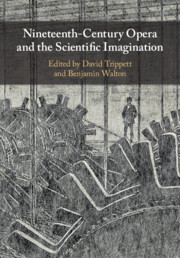Book contents
- Nineteenth-Century Opera and the Scientific Imagination
- Nineteenth-Century Opera and the Scientific Imagination
- Copyright page
- Contents
- Figures
- Tables
- Music Examples
- Contributors
- Acknowledgements
- Introduction
- Part I Voices
- Part II Ears
- Part III Technologies
- 8 Science, Technology and Love in Late Eighteenth-Century Opera
- 9 Technological Phantoms of the Opéra
- 10 Circuit Listening
- Part IV Bodies
- Bibliography
- Index
9 - Technological Phantoms of the Opéra
from Part III - Technologies
Published online by Cambridge University Press: 07 August 2019
- Nineteenth-Century Opera and the Scientific Imagination
- Nineteenth-Century Opera and the Scientific Imagination
- Copyright page
- Contents
- Figures
- Tables
- Music Examples
- Contributors
- Acknowledgements
- Introduction
- Part I Voices
- Part II Ears
- Part III Technologies
- 8 Science, Technology and Love in Late Eighteenth-Century Opera
- 9 Technological Phantoms of the Opéra
- 10 Circuit Listening
- Part IV Bodies
- Bibliography
- Index
Summary
Commenting on the emerging ‘material turn’ in opera studies, Jonathan Sterne recently cautioned about the need to define what we mean by a term as ‘seductive yet baggy’ as materiality. Yet even if we sidestep the confusion of the competing Marxist, media theoretical, neuroscientific, ontological and ecological materialities that Sterne invokes, to start instead with a more naīve quest for opera’s historical material traces – its objects and its things – where might the limits of such a search lie? And must the realm of the material for the opera scholar necessarily function, as Sterne suggests, as a way ‘to get at the immaterial, the ephemeral, the mortal’? What, in short, might a material history of opera look like?
- Type
- Chapter
- Information
- Nineteenth-Century Opera and the Scientific Imagination , pp. 199 - 226Publisher: Cambridge University PressPrint publication year: 2019

